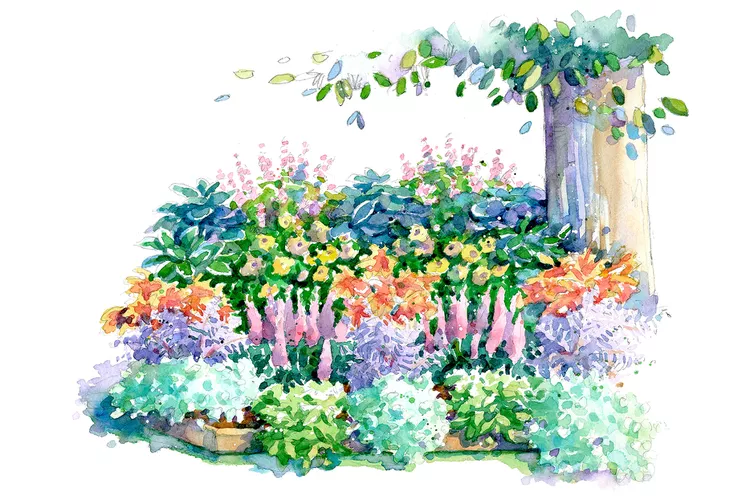The space under a large tree's branches can seem challenging when you want to grow something colorful. Fortunately, several perennials don't mind limited sunlight. This no-fuss shade garden plan features several of these plants that will add bright blooms and lush foliage without requiring much care from you.
Plant List for Creating the No-Fuss Shade Garden Plan
Use the following plants to create this low-maintenance, yet colorful garden. If you aren't able to find the exact cultivars listed above, substitute others that have similar colors, shapes, and sizes.
- 3 'White Nancy' Deadnettle (Lamium maculatum), Zones 4-8
- 2 'Niveum' Barrenwort (Epimedium × youngianum), Zones 4-8
- 3 'Ursula's Red' Japanese painted fern (Athyrium niponicum var. pictum), Zones 5-8
- 2 'Visions in Pink' Chinese astilbe (Astilbe chinensis), Zones 4-8
- 3 'Golden Zebra' Foamy bells (x Heucherella), Zones 4-9
- 2 'Patriot' Hosta, Zones 3-8
- 2 'Golden Sunrise' Hellebore (Helleborus x hybridus), Zones 4-9
- 2 'Gold Heart' Bleeding heart (Dicentra spectabilis), Zones 3-9
- 2 'Sagae' Hosta, Zones 3-8
To assemble this garden, start from the back edge and move forward. Elegant bleeding hearts and bold hostas create the first layer, followed by hellebores and foamy bells. Astilbes and painted ferns create a lower-growing, fine-textured layer, and the front of the bed is overflowing with deadnettle and barrenwort.
Because some plants can become overly aggressive and spread out of control in certain climates, always check which species are considered invasive in your area before planting. For example, deadnettle is considered invasive across several Northeastern to North Central states.
Get the Free No-Fuss Shade Garden Plan
The garden plan for this design includes an illustrated version of the planted garden, a detailed layout diagram, a list of plants for the garden as shown, and complete instructions for installing the garden.




















